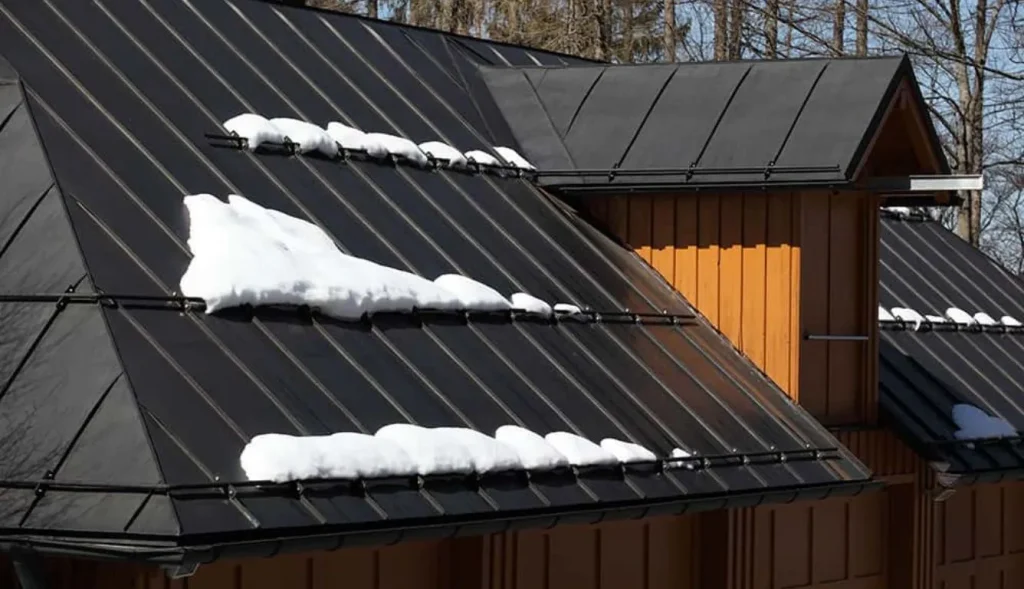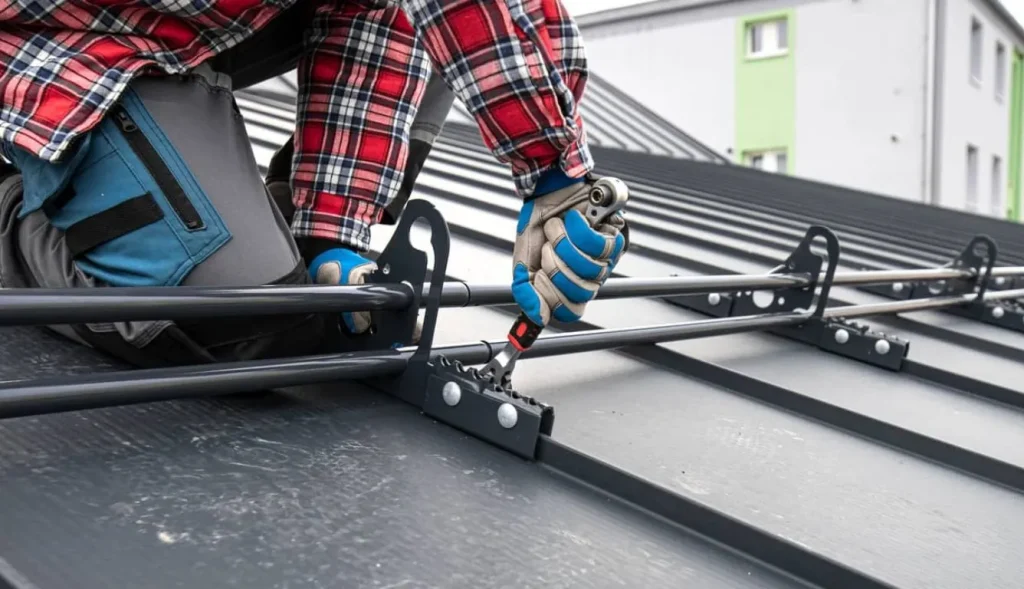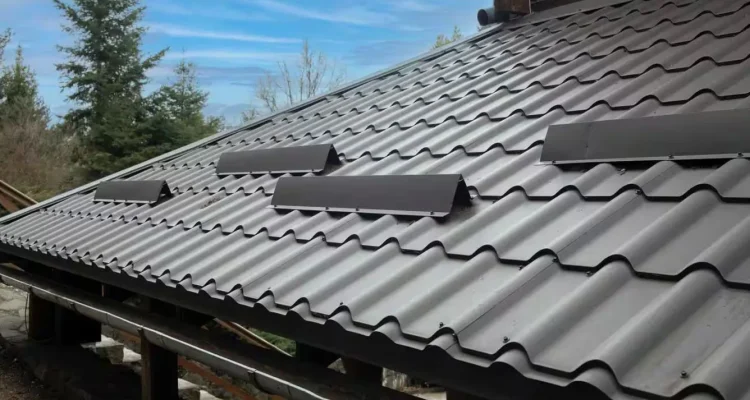Introduction
Metal roofs are a popular choice for many homeowners due to their durability, longevity, and sleek appearance. However, they come with their own set of challenges, particularly when it comes to maintaining traction. Whether you’re performing routine maintenance or working on a roof installation, sliding on a metal roof can be dangerous. In this article, we’ll explore effective strategies to keep you safe and secure on your metal roof.

Understanding Metal Roofs
What is a Metal Roof?
Metal roofs are constructed from various metals, including steel, aluminum, and copper. They offer excellent protection against the elements and can last for decades with proper care. They come in different styles and finishes, each providing a unique look and level of performance.
Types of Metal Roofs
There are several types of metal roofing systems, including standing seam, corrugated panels, and metal shingles. Each type has its own characteristics and potential issues regarding traction and safety. Understanding these differences can help you choose the right approach to prevent sliding.
Why Sliding on a Metal Roof Happens
Factors Contributing to Sliding
Several factors contribute to the risk of sliding on a metal roof. These include the roof’s pitch, the type of metal used, and environmental conditions. For instance, a steeper roof pitch increases the likelihood of sliding, especially if the surface is smooth and lacks traction.
The Role of Roof Pitch and Surface Texture
Roof pitch plays a significant role in the likelihood of sliding. Steeper pitches can make even slight inclines hazardous. Additionally, the surface texture of the metal roofing can either contribute to or mitigate the risk of slipping. Smooth surfaces are more prone to causing slips compared to textured or corrugated options.
Preparing for Roof Work
Assessing the Roof Condition
Before attempting any work on your metal roof, it’s essential to assess its condition. Check for any damage, rust, or loose panels that could affect your safety. Ensuring the roof is in good shape will help minimize risks while you’re working.
Safety Gear Essentials
Proper safety gear is crucial when working on any roof. Invest in a high-quality safety harness, helmet, and non-slip gloves. These items are designed to protect you in case of a slip and provide additional grip and stability.
Preventive Measures to Avoid Sliding
Using Roof Safety Harnesses
One of the most effective ways to prevent accidents is by using a roof safety harness. These harnesses are designed to secure you to a stable point, reducing the risk of falling if you do lose your footing.
Installing Roof Anchors
Roof anchors can be installed to provide additional safety points on your roof. They allow you to attach your harness securely, ensuring you remain safe while working. Make sure to follow installation guidelines or consult a professional for proper placement.
Choosing Proper Footwear
Footwear plays a significant role in preventing slips. Look for shoes or boots with rubber soles and deep treads. These features provide better grip on metal surfaces, reducing the likelihood of slipping.
Surface Modifications
Applying Anti-Slip Coatings
Anti-slip coatings can be applied to metal roofs to enhance traction. These coatings create a textured surface that improves grip and reduces the risk of slipping. Choose a coating specifically designed for metal roofs for the best results.
Adding Roof Traction Pads
Roof traction pads are another effective solution. These pads adhere to the roof surface and provide additional grip. They are especially useful in areas where frequent foot traffic occurs.
Seasonal Considerations
Handling Ice and Snow
In colder climates, ice and snow can significantly increase the risk of sliding. Use a roof rake to remove snow and ice buildup. Additionally, consider installing heat cables to prevent ice dams and improve traction.
Dealing with Rain and Wet Conditions
Rain can make metal roofs extremely slippery. Avoid working on your roof during or immediately after rainfall. If you must work in wet conditions, use additional safety measures such as harnesses and anti-slip footwear.
Maintenance Tips
Regular Roof Inspections
Regular inspections are key to maintaining roof safety. Check for any signs of wear and tear, rust, or damage. Addressing issues promptly can prevent more significant problems and ensure your roof remains safe to walk on.
Cleaning and Upkeep
Keep your metal roof clean and free of debris. Accumulated leaves, dirt, and moss can affect traction and lead to slipping. Use a soft-bristle brush or a low-pressure hose to clean the roof without causing damage.
Professional Help
When to Call a Roofing Professional
If you’re unsure about your ability to safely work on your metal roof, or if you encounter significant issues, it’s best to call a roofing professional. They have the expertise and equipment to handle complex tasks safely.
Benefits of Professional Roof Maintenance
Professional roof maintenance ensures that all safety measures are correctly implemented. Experts can perform thorough inspections, apply protective coatings, and address any issues that may affect roof safety.
FAQs
How can I safely inspect my metal roof?
Use a safety harness and sturdy ladder to inspect your roof. Look for signs of damage or wear, and ensure you follow all recommended safety practices.
What should I do if I slip on a metal roof?
If you slip, stay calm and try to regain your footing. Ensure your harness and safety equipment are properly secured. If the slip results in injury, seek medical attention immediately.
Are there specific shoes for walking on metal roofs?
Yes, shoes with rubber soles and deep treads are ideal for walking on metal roofs. They provide better traction and reduce the risk of slipping.
How often should I apply anti-slip coatings?
Anti-slip coatings should be reapplied every few years, depending on the manufacturer’s recommendations and the roof’s condition.
Can I install roof anchors myself?
While it’s possible to install roof anchors yourself, it’s often best to consult a professional to ensure they are correctly placed and securely installed.

Conclusion
Keeping safe on a metal roof requires careful planning and the right precautions. By understanding the factors that contribute to slipping and implementing preventive measures, you can significantly reduce the risk of accidents. Regular maintenance and professional help are also crucial in ensuring your metal roof remains safe and functional.


Congratulation!